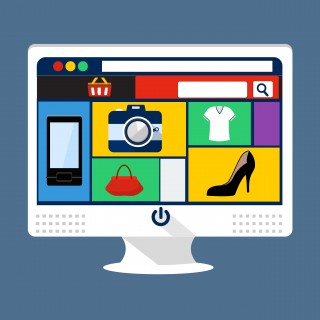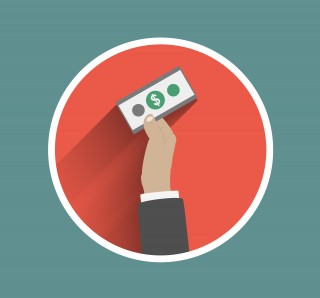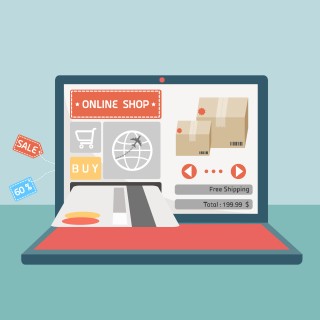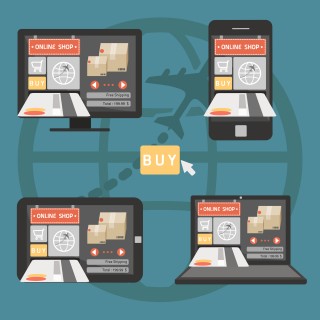Recent research shows that 53% of businesses spend less than 5% of their total marketing budget on conversion optimization. 35% of the businesses report a conversion rate of less than 1%. It wouldn't surprise me if a good chunk of businesses don't even know their eCommerce conversion rates. For this reason, I will be highlighting some incredibly useful and actionable tips which will be almost guaranteed to help turn wasted visitors into paying customers.
I find it amazing that, with more than 95% of their budget being spent on bringing visitors to their website, they aren't doing everything possible to convert those visitors into customers. A poorly optimized page will drive away visitors and waste a large chunk of that money invested in lead generation. Having a poor performing landing page will even have an impact on your search rankings in the long run.
eCommerce conversion rates remain neglected
 Regardless of its key importance, conversion optimization seems to remain the most neglected part of digital marketing. The average conversion rate for international eCommerce stores has been hanging around the 1.5% mark (depending on the sector) for what seems like forever, despite dramatic advances in technology and a growing confidence in entering personal credit card details online. The blame lies squarely on eCommerce websites and a lack of understanding behind the psychology of a web user.
Regardless of its key importance, conversion optimization seems to remain the most neglected part of digital marketing. The average conversion rate for international eCommerce stores has been hanging around the 1.5% mark (depending on the sector) for what seems like forever, despite dramatic advances in technology and a growing confidence in entering personal credit card details online. The blame lies squarely on eCommerce websites and a lack of understanding behind the psychology of a web user.
eCommerce website owners seem to be too busy updating their product ranges, looking for new markets and processing orders that they hardly have the time, or the experience, to invest in conversion optimization. As a result, they waste money on visitors driven from SEO, PPC and other ways of generating traffic to their sales pages.
I have seen clients triple their conversion rates by applying some of the following tips to their product pages. It is important to remember that each one of these tips might only make a small difference, but collectively can be very powerful.
Create a Sense of Urgency
 You have to convince the visitor to buy your product, and one of the best ways of doing this is to try to turn it into an impulse sale. Supermarkets have mastered the art of the impulse sale by adding sweets and chocolate in and around the checkout area when you pay. How can you replicate this behaviour within a product page? It can be difficult. Product pages don't usually create a sense of urgency; instead they often give the impression that the product would still be available at the same price, even if the customer went away came back a week later.
You have to convince the visitor to buy your product, and one of the best ways of doing this is to try to turn it into an impulse sale. Supermarkets have mastered the art of the impulse sale by adding sweets and chocolate in and around the checkout area when you pay. How can you replicate this behaviour within a product page? It can be difficult. Product pages don't usually create a sense of urgency; instead they often give the impression that the product would still be available at the same price, even if the customer went away came back a week later.
Some eCommerce websites try to create urgency by using terms like "buy now" or "hurry up." The concept is fine, but they don't tell the visitors why they should buy now. The most powerful force that can make your customers take an immediate buying decision is fear"the fear of missing out on a good deal or a quick delivery.
Here are a few ways to add some urgency into your product pages. As always there are counter arguments with some of these ideas, so they have to be weighed up on a case-by-case basis:
1. Low Stock Indicator
Inform your customers when a particular product is about to run out of stock. This encourages them to purchase immediately, or they might miss out on the product. A low stock level also reassures the customer that the item is popular; this gives them confidence that they are making the right decision. If, however, you have data to suggest that customers purchase multiples of the item, showing low stock levels might have a negative impact on sales if there isn't enough stock to cover their need. This tactic is probably best when you are confident that you sell the item in singles.
2. Time-sensitive shipping
One trick that works very nicely is having a countdown to the daily delivery time cut-off. If your courier collects at 4pm and your cut-off is 3pm for orders to leave your warehouse that same day, let your visitors know in a clear and precise way. Buyers are inpatient. You can take advantage of their impatience by letting them know if they order soon; they could get the item as quickly as the following day. The best implementation of this method that I have seen was on The Workplace Depot website (you can see an example product page here). They take this process a step further and actually remove the countdown timer between the hours of 3pm (their cut-off) and 7am - this way, it doesn't put visitors off from ordering if they browse the website at 15:05 and realise they have almost 24 hours to order.
3. Free Shipping
A growing proportion of customers look for free shipping when they buy products online. Having large shipping fees will scare visitors off and have a negative impact on your conversion rate. You have to ensure you have enough margin to cover the delivery fee but if you do have the margin, offering free shipping will certainly increase your orders. As ever, there is a balance. Depending on your margin, you will need a certain amount of increase in orders to cover the cost you used to receive from customers paying a delivery fee.
4. Limited Time Deals
You could offer limited-time discounts, free items or package deals to encourage customers to buy before the deal ends. Highlight the amount they will save by buying now, the time left before the deal expires, and the number of people who have already bought that deal to encourage them to click that all important add to basket button.
Ensure you attract high-quality visitors
 Every website visitor is different, and they all have their own needs, behaviours and concerns. For this reason, you must ensure that the quality of visitors coming to your site is high, or your conversion rates will suffer.
Every website visitor is different, and they all have their own needs, behaviours and concerns. For this reason, you must ensure that the quality of visitors coming to your site is high, or your conversion rates will suffer.
5. Get your marketing right & attract quality traffic
Ill elaborate on the point above; if you don't optimise for the correct keywords in your inbound marketing strategy, the quality of visitors could be low. If the visitors coming to your sales page don't find the information (or product) they are looking for, they will leave - it's that simple.
For example: imagine a broad search term like gaming computers. If you want to start gathering visitors for this term, you need to ensure you actually sell gaming computers and not just conventional computers. Think about your range - having one choice of a gaming computer still probably isn't enough unless there were multiple upgrades available. Having a good range helps with broad search terms like this.
Think about the visitor experience
 The most important thing to think about from a user experience point of view is simplicity. Is the page easy to understand? Do the eyes draw to the add to basket button? Do you over complicate the page with lots of bright colours and a lot of pointless features?
The most important thing to think about from a user experience point of view is simplicity. Is the page easy to understand? Do the eyes draw to the add to basket button? Do you over complicate the page with lots of bright colours and a lot of pointless features?
Here is a list of other things to think about which all play vital roles in conversion rates (and equally, drop rates). Visitors landing on product pages want these questions answered without having to go looking around the website. It is essential to answer these questions in order to help push your customer through the decision-making process. If you answer each question as clearly as possible without over complicating the product page then, you should see a positive impact on sales. I'll go into more detail on each specific question.
6. Is the product page easy to understand and navigate?
Conversion rates increase massively if you just make things simple and clean (and maybe even bland!). As long as you have a clear call to action (in this case, an add to basket button) there is little chance of confusing visitors. Make the button stand out and try to ensure minimal distractions. Look for areas of the product page that might draw the eyes away from where you want your visitors to look.
7. Is the price obvious and fair?
You have to make the price of the item very visible - it is one of the most important pieces of information on the page. Not only does it have to be visible, it should also be clear. Avoid adding fees and if your prices are excluding taxes make it obvious otherwise you might lose an order at the checkout when they realise it will cost them more than they expected.
8. Is the product price competitive?
You may have very little control over this aspect, and the last thing you want to do is start a race to the bottom with your competitors, but it is important that you try to match the customer's perception of value. If you pride your store as being competitive then don't be afraid to brag about it by adding a price comparison between you and your competitors.
9. Is the product suitable for my needs?
A great way of ensuring the visitor understands the quality of your product is to show off reviews that existing customers have about the product. Adding reviews to product pages should really help.
10. What is the delivery cost?
Amazon have mastered converting visitors into customers by ensuring the visitor perceives value. One way to do this is to offer free delivery. Sometimes free delivery isn't an option but it's important not to seem too steep. Regardless of the cost of shipping, make it obvious early on. Transparency is important if you don't want to lose a customer when they find out that they have to pay unexpected charges when they get to the checkout.
11. How long does delivery take?
Long deliveries are a killer for your conversion rate. Customers are impatient and offering a quicker delivery option actually helps boost sales.
12. What payments methods are available?
Having lots of payment methods means you can match the expectations of a larger audience. As usual though, don't over complicate it.
13. Should I trust this company?
Trust signals are hugely important. Try to offer guarantees and take advantage well known certification brands like McAfee Secure and Trusted Shops. If you have won awards, show them off. Another way of generating trust is by adding genuine reviews of your service. Display your phone number (try to get a free phone number - see point 14) and live chat icon clearly (if you don't have live chat, you should get it - see point 13). This shows your customers they can reach you quickly if there's a problem.
Provide excellent communication
![]() Good and timely communication should be a default practice for every eCommerce store. In order to achieve what most visitors would expect from your store, you need to ensure you cover all bases.
Good and timely communication should be a default practice for every eCommerce store. In order to achieve what most visitors would expect from your store, you need to ensure you cover all bases.
14. Live Chat
A global consumer trend study found that 90% of customers consider live chat helpful, and another study indicates 63% of them were more likely to return to a website that offered live chat support. In fact, 38% of customers said they had made their purchases because of the chat support they had received. That's why many good eCommerce websites now provide instant live chat, and so should you.
Your product pages should have a prominent instant chat icon so that the customer may ask any questions that they might have.
15. Free phone
Having a telephone number on your eCommerce website is an absolute must. What adds extra trust is having a telephone number that is free to call. The costs aren't substantial, but the benefits can be massive.
Be descriptive
 Lots of eCommerce stores suffer from thin, poor or copied content. Content matters. So much so in-fact that Google created the Panda algorithm to try to improve the content quality of their search results.
Lots of eCommerce stores suffer from thin, poor or copied content. Content matters. So much so in-fact that Google created the Panda algorithm to try to improve the content quality of their search results.
16. Do not copy/paste
Don't just copy and paste manufacturers descriptions - try to give your visitors something unique and descriptive. If you are struggling to be creative or have writers block then you could always get a professional to write your descriptions. There are some great writing services out there - my pick of the bunch are Express Writers but you can also find good writers on oDesk (but don't be tight, good writers are worth their weight in gold).
17. Explain Products Visually
Everyone likes to see what they are buying. You must use photos and videos creatively to project a better perception of your products and help explain them better. Showing three or four stills of the product in isolation is not enough, try adding a shot of the product in situ to give an indication of size and quality.
18. Sometimes images aren't enough, try adding a video
Adding great quality and descriptive videos often has a positive impact on conversions. High value, technical products that require a visual demonstration should have video on their product pages. Video also conveys a better image of your company while helping to build trust and create a professional image for your brand.
Unified experiences across all devices
 Whether you like it or not, mobile web-traffic is on the up. You have to provide visitors the same experience regardless of the device they are using.
Whether you like it or not, mobile web-traffic is on the up. You have to provide visitors the same experience regardless of the device they are using.
19. Responsive design
Forget having a mobile version of your site, you should develop a responsive design. Responsive websites can have a monumental impact on converting customers as Google highlight in this case study. Nobody likes to squint at a small screen to do their online shopping so make it easier for them. In 2014 there are now over 125 devices with different resolutions. Try to ensure that your site has at least 4 different versions for varying screen sizes to you can cater for your entire audience.
Gather data
 Before making big decisions, gather up some data and do some testing. This process is one of the most important and should not be ignored.
Before making big decisions, gather up some data and do some testing. This process is one of the most important and should not be ignored.
20. Try optimisation tools
There are some great conversion optimisation tools on the market like Optimizely, Unbounce, Crazy Egg, Visual Website Optimizer, and plenty more. It may feel time-consuming and expensive to experiment with different tools, but the results are worth the effort.
21. Hire test shoppers
One of the best ways to find bugs in your checkout process is to hire test shoppers. This works best when you are in the same room as them. Watch their eyes and their behaviour. See if they hit snags and keep an eye out for their body language.
Streamline the checkout
 If you get the product page how your visitors want it, the next step is ensuring your checkout process is seamless. Over complicated checkout, processes can be the cause of a large proportion of basket drops.
If you get the product page how your visitors want it, the next step is ensuring your checkout process is seamless. Over complicated checkout, processes can be the cause of a large proportion of basket drops.
22. One-page checkout
Remove the multi-page checkout if you want to make it easy for visitors to place orders.
23. Reduce clutter
Try not to give visitors too much information to fill out, they will get fed up. However much you feel like having your customer's fax number, mother's maiden name and dogs first lover might be useful - it isn't worth the loss of customers!
24. Don't insist that they register
You might like the idea of locking a customer into having an account in your database, and some customers are happy to sign-up. Unfortunately, not all customers will be happy to register. Remove the register option from the checkout process and try adding the option to sign-up once the order is placed.
25. Automate as much as possible
Keeping with the simplicity theme, try to make it even easier to place an order on your website by introducing automation. One of the best examples of automation at the checkout is implementation of automatic address recognition. It's much easier for your customer to simply add their postcode/ZIP than it is to enter the full address. One of my favourite services to help with this process is Postcode Anywhere, but there are plenty of alternatives.
Another automation to consider is one-click purchasing. You can add a Paypal or Amazon button which allows your customers to order and have it delivered to their standard delivery address at the click of a button.
Don't be afraid to ask for help
If all else fails, you can always try a professional. There are some fantastically talented conversion specialists within reaching distance. Don't be afraid to ask for help, the costs involved can easily be recovered if they do their job correctly.
